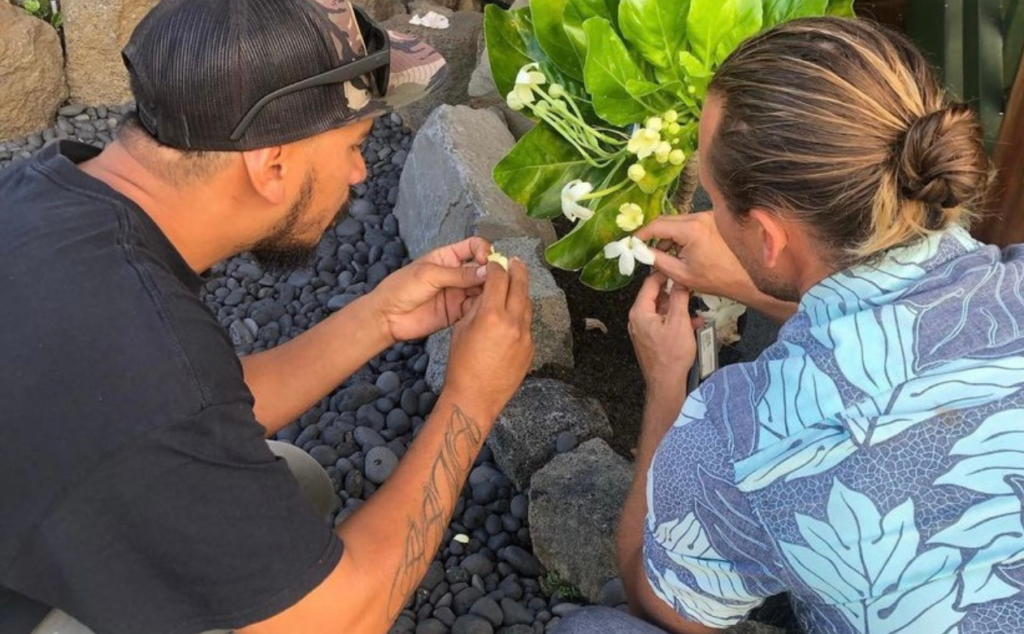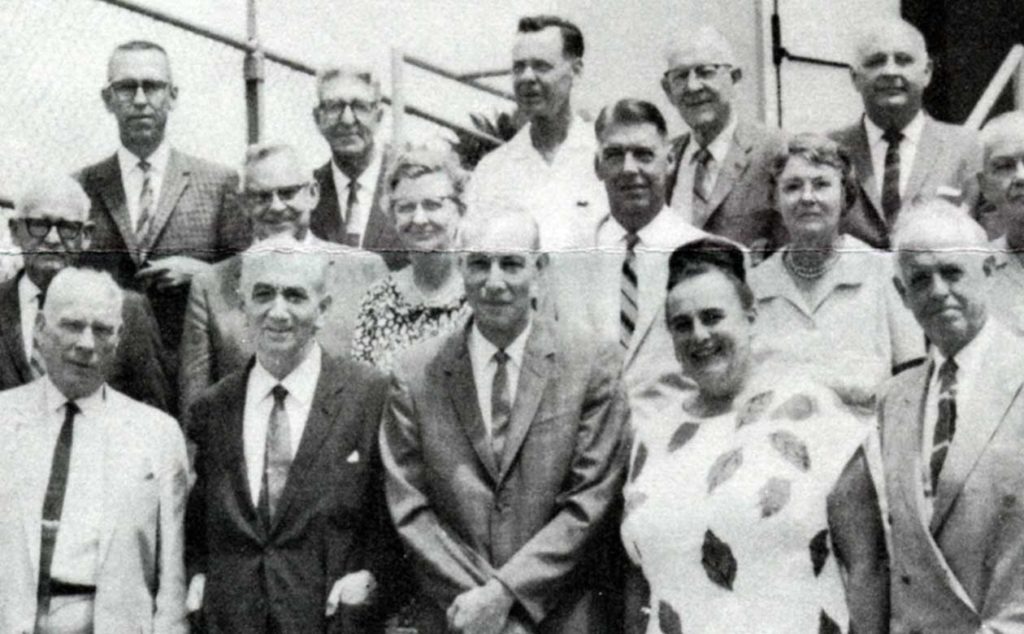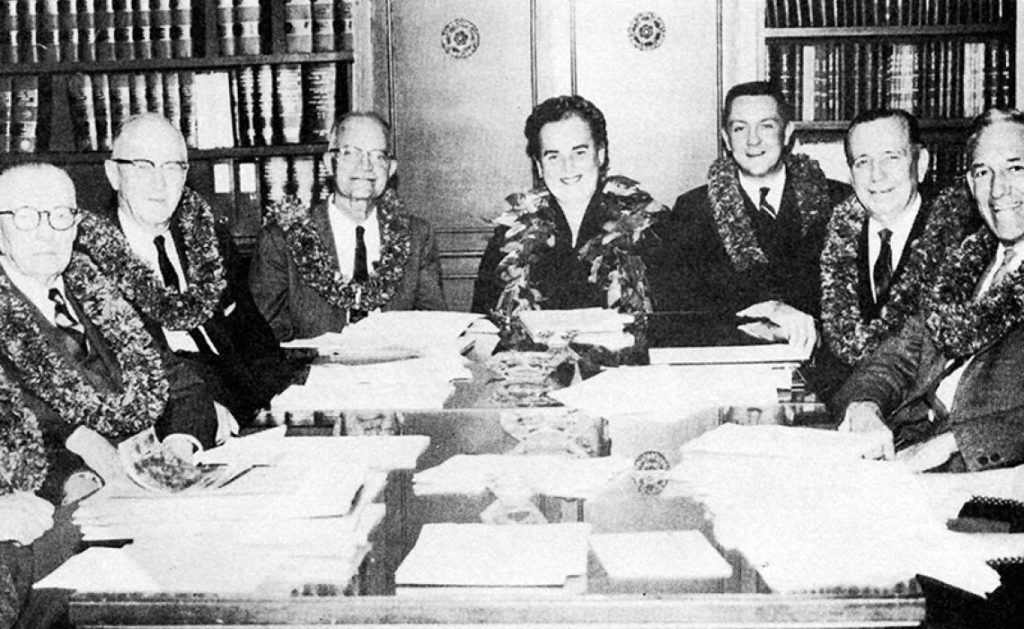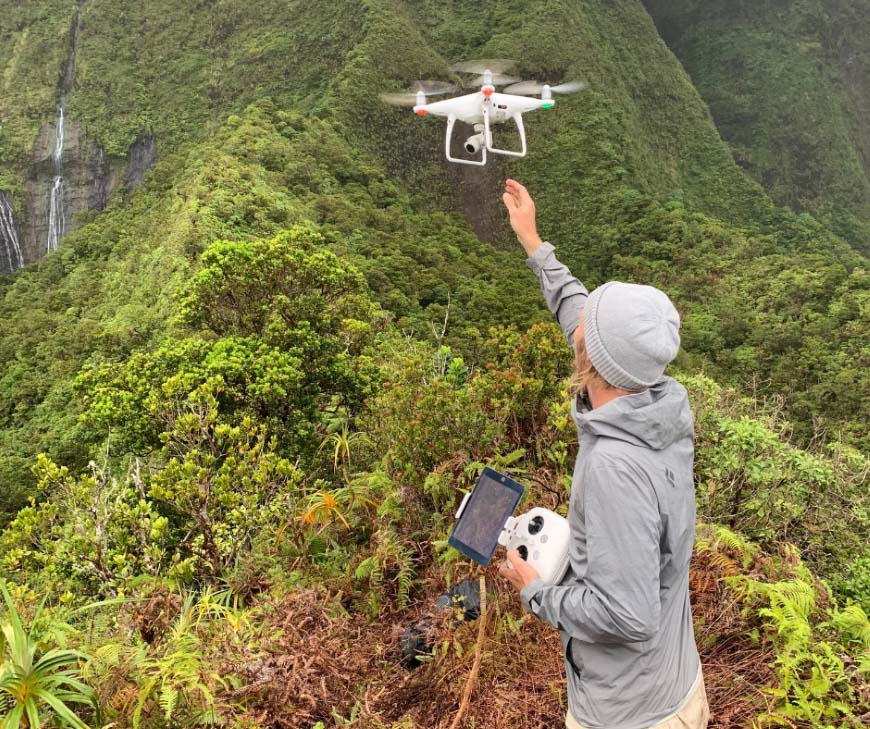Approximately one million plant and animal species are threatened with extinction worldwide. Now more than ever, the need is upon us to protect plants and unlock solutions to the environmental challenges we face. With your help, NTBG has been meeting the need to save plants and stemming the tide of extinction in tropical regions worldwide for more than 55 years. When you support National Tropical Botanical Garden, you help save plants and people. This story is part two of a three-part series. Follow along to learn more about your impact and NTBG’s plant-saving science, conservation, and research initiatives. Read part I | Read part III
Botanical history is rarely boring. Often full of tall tales, larger-than-life personalities, exploration, and discovery, the establishment of the National Tropical Botanical Garden as we know it today is no exception. With support from some of the biggest names in botany and pressures of the precarious geopolitical landscape of the early to mid-20th century, the need to establish a National Tropical Botanical Garden and home base for the study and conservation of tropical plants located within the United States was critical. Find out how a group of committed citizens, visionary botanists, and philanthropists made it possible and how NTBG continues to address the need to save plants and people in the 21st century.
Dr. David Fairchild (1869 – 1954) and Dr. Joseph Rock (1884-1962), two internationally famous plant explorers, ‘planted the seed’ that would one day become NTBG. Fairchild, an American botanist and one of the most famous plant explorers in history, created the Section of Foreign Seed and Plant Introduction of the United States Department of Agriculture. He spent nearly 40 years traveling the world, searching for plants that would serve the American people. As a result, Fairchild is credited with introducing hundreds of important plants to the United States, including mangos, alfalfa, nectarines, dates, cotton, soybeans, pistachios, and flowering cherries. Today, Fairchild’s personal estate in Coconut Grove, Florida, is home to NTBG’s Kampong Garden.

Joseph Rock emigrated to the United States from Austria in 1905. With a keen interest in botany, he ended up in Honolulu, where he lived for 13 years and became a leading scholar on Hawaiian flora. He helped create the first herbarium in Hawaii for the USDA and published seminal works on Hawaiian flora, including The Indigenous Trees of the Hawaiian Islands. Rock was mentored by and formed a friendship with Fairchild, who instilled the importance of establishing a botanical garden in Hawaii to conserve rare plants and serve as a center for scientific research. From 1920 to 1949, Rock dedicated his time and work to botanical exploration and ethnographic research in China. While abroad, he continued to correspond with other notable botanists, Dr. Harold Lyon, and Dr. Harold St. John, about the need to establish a national garden in Hawaii.

When Rock returned to Hawaii in the 1950s, he noted that many of the Hawaiian species he documented and collected early in his career had disappeared. This species decline and political instability in some tropical regions where most botanical research was conducted meant the need to create a facility to study and protect tropical flora accessible from the United States was more urgent than ever.

Lyon and St. John wrote prolifically about the need for a national garden in Hawaii and helped bolster much-needed support from the scientific community; however, Rock found his greatest ally in Mrs. Elizabeth Loy McCandless Marks. Mrs. Marks was a leading member of Honolulu society and president of the Garden Club of Honolulu. She championed the idea of creating a national garden and earned the support of community leaders and philanthropists Robert Allerton, Henry Francis duPont, Paul Bigelow Sears, Horace Albright, and Deane Malott. She even garnered the attention of the influential Garden Club of America in Washington D.C. In doing so, Mrs. Marks nationalized the need to create a garden in Hawaii. As a result, she was elected as a founding Trustee of the Hawaiian Botanical Gardens Foundation, which began to build the case for congressional charter in 1959.
“As time passes, we will need to depend more and more on the plants of the tropics and now is the time that information about them should be accumulated rather than waiting until the need is upon us and the information not at hand.”
– Dr. William J. Robbins, Director, New York Botanic Garden (1937 -1958), quoted from the U.S. National Tropical Botanical Garden Proposal
In the spring of 1964, The Hawaiian Botanical Gardens Foundation submitted a proposal to American citizens. In it, they urged, “The need is upon us.” To that point, there was not, nor had there ever been a comprehensive Tropical Botanical Garden established in the United States. American scientists and students relied upon research facilities abroad to conduct tropical botanical studies and understand conservation needs. They argued that there would come a time we would depend upon tropical plants and should accumulate knowledge sooner rather than waiting for the moment of need.

In August of that same year, Congress determined a compelling case had been made and enacted a federal charter that established the private, nonprofit Pacific Tropical Botanical Garden, now known as National Tropical Botanical Garden. Senator Daniel K. Inouye was instrumental in guiding this effort to its successful conclusion. President Lyndon B. Johnson signed the Public Law creating and incorporating the institution by charter on August 19, 1964.
To this day, NTBG is the only tropical botanical garden with a charter from the United States Congress, five locations, and a more than 55-year history of documenting, studying, and protecting tropical plants. Our network of gardens, preserves, and research centers encompass more than 2,000 acres with locations in Hawaii and Florida. Thousands of species from throughout the tropical world have been gathered, through field expeditions, collaborations with other institutions, and researchers to form an unparalleled living collection.

Our collection includes the largest assemblages of native Hawaiian plant species and breadfruit cultivars in existence. Unfortunately, many of the species in our collections are threatened and endangered, or have disappeared from their native habitats entirely. In our preserves and beyond our garden boundaries, NTBG is working to restore native habitats and save plants facing extinction. Our gardens and preserves are living laboratories and classrooms for staff, scientists, researchers, students, and visitors worldwide.
When you support NTBG with a gift or membership, you support critical conservation and research that saves plants. You become part of a legacy of plant protectors, botanists, and environmental enthusiasts who have made the world a better place for plants and people for generations, and safeguard our future.